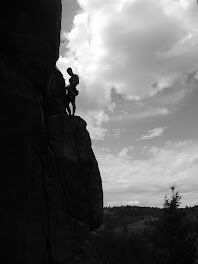10 Free Online Photography Courses, Tutorials, and Seminars
Digital cameras have opened up the world of photography for so many people, but even if you're only "pointing and shooting," there are lots of tips and tricks out there that can help you increase your knowledge and expertise.
Indeed, no matter what your photography skill level, you can find loads of free information online to help you take your photos to the next level and have all your friends asking who took those professional-looking shots.
Here are 10 free online photography courses, tutorials, and seminars that can help you become a better photographer:
1. Beginning Photography Tips & Techniques Video Series: eHow's 14-part series that explains the differences between using a 35 mm camera and a digital camera, how to load film into a 35 mm camera, various film formats, how to correctly use light meters, and other basic photography techniques.
2. Jodie Coston's Classroom: Ten free lessons from an award-winning freelance photographer covering composition, aperture, shutter speed, landscape, portraits, and more. Very comprehensive and also includes discussion sections.
3. Night Photography Lesson: Offered by School of Photography, this free online course explains the basics of night photography, including timed photos, flash guns, and self timers; other paid courses offered as well.
4. PhotoFlexLightingSchool: Free lessons for those who wish to improve their photographs through increased knowledge of the use of lighting.
5. PhotographyCourse.net: Offers beginning, intermediate, and advanced film and photography courses covering areas such as optics, cameras, light, webpage layout, and digital photography.
6. Photo Seminars: Comprehensive list of available seminars, including those devoted to wildflowers, travel, winter photography, and a special 3-part series on garden photos.
7. PhotoWalkThrough: Collection of tutorials on how to use photo editing software, particularly Adobe Photoshop.
8. ShortCourses.com: "The On-Line Library of Digital Photography," which runs the gamut on digital camera information from basic camera equipment to pixels and image sensors.
9. SLR Photography Guide: Collection of tutorials on everything you need to know about using your SLR digital camera.
10. Suite101 Photography Basics Course: Four lessons covering the history of photography, your camera "toolbox," camera basics, and lighting.
Happy snapping!
Guest post by Michelle Fabio, About.com Guide to Law School, who also writes about online nursing education at OnlineNursingEducation.org and loves playing around with her digital camera. Check out her photos at Flickr!
Steampunk Adventures back from a real life interruption!
-
Hello everyone, I can’t believe that I have not posted anything here since
June of 2011! So much has happened in the past several months..real life
has ce...
14 years ago


